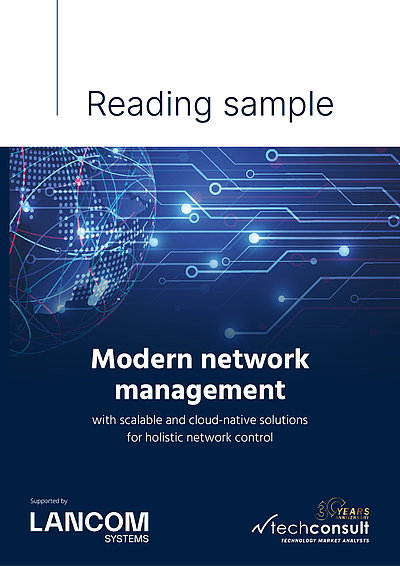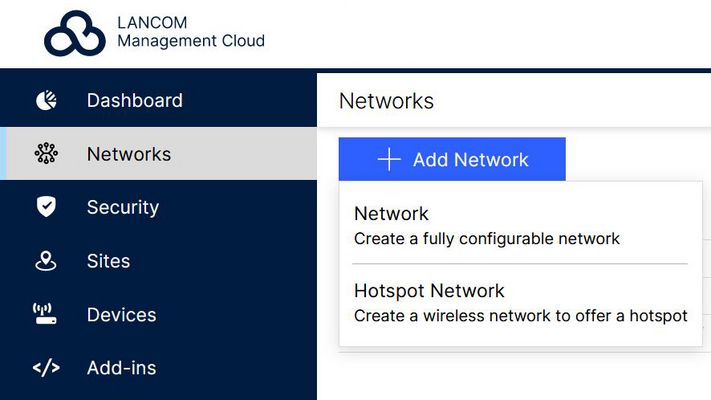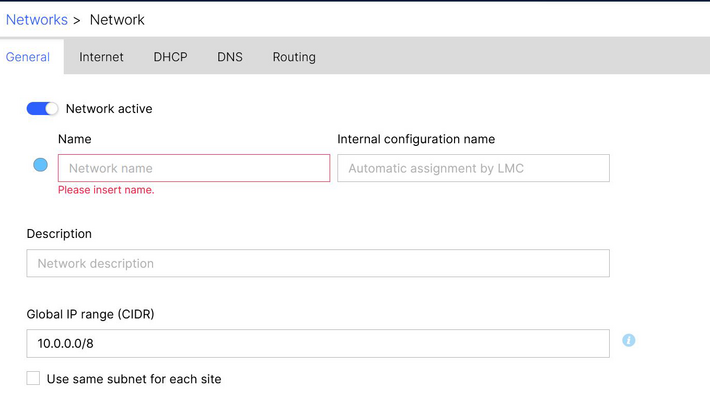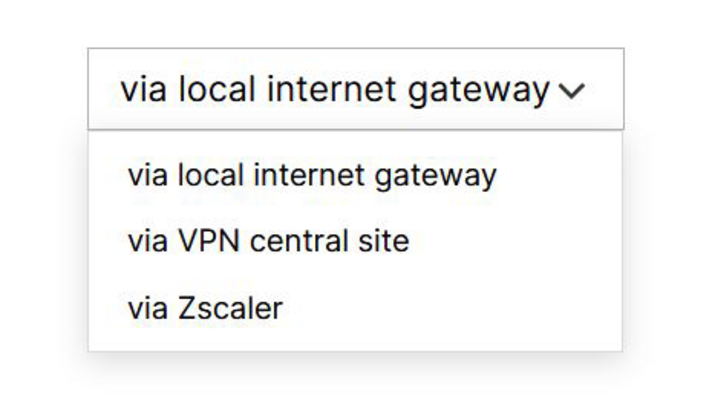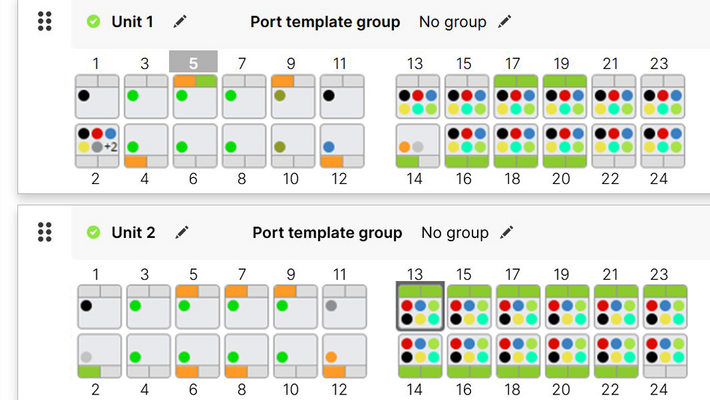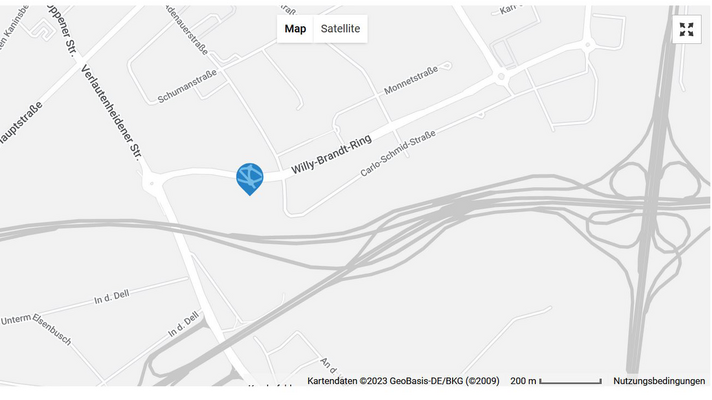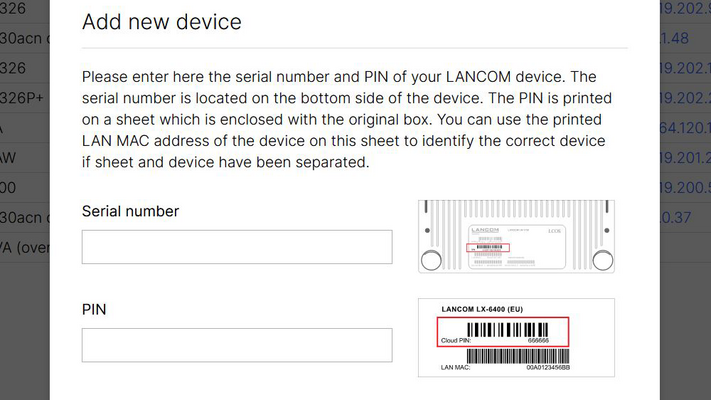From zero to go in just a few clicks. That is the promise of the LANCOM Management Cloud. And this is how to deliver on it.
The first good piece of news: All LANCOM network components, such as routers and firewalls as well as their virtual variants, WLAN access points and switches manufactured since 2015 – and in some cases even long before that – are cloud-compatible. An offering as broad as this is unique worldwide.
The second: Network administrators won’t be seeing much of the robust black or silver steel housings, the solid network ports, or the softly glowing LEDs. The touch of cool steel is passé. Tactile types may regret this, but it is actually very good news. Because the innovative principle that rules the entire product range is “zero-touch”. That is not so much a requirement as a consequence of the way they work, namely to do exactly what the network configuration dictates, without anyone laying a hand on the device.
Is your company NIS2-compliant and digitally sovereign?
Take control of your network security and Digital Sovereignty. Security requirements are increasing: starting in 2024, the EU NIS2 directive will apply to more companies than ever before and mandate stricter measures for network and information security. Additionally, Digital Sovereignty is becoming an increasingly urgent issue in Europe. It’s worth checking whether your company needs to take action. We provide informational material and practical tips to help:
Learn more about NIS2 and Digital Sovereignty
Enterprise IT rethought
Inverting the way of working, away from the configuration of each individual device in favor of network configuration via the cloud, means nothing less for companies than the dawn of a new era in the IT landscape.

Productive working
A new dimension in terms of versatility, security and reliability, and a drastic reduction in workload. This almost instant freeing-up of resources can act as a booster to the digitalization projects at any company. In a nutshell: The LANCOM Management Cloud (LMC) means there is no crack admin on site. At the very least, it saves a large part of the time-consuming and unproductive work that IT professionals have to face in classic, manual network management.

Efficient distribution of roles
In terms of roles and responsibilities, the IT department has a system administrator and an IT manager, much like professional football teams have a coach and a sporting director. And LANCOM's cloud-based network management replaces the coach. Or: The coach can concentrate on strategically important tasks such as setting objectives in consultation with the management board and deal with strategies including squad planning, budgeting, and managerial tasks. The on-site training, i.e. teaching the components what they need to do in terms of the network strategy, is handled by the cloud.
Cloud control from a single source
And this is what cloud control à la LANCOM looks like in concrete terms: All of the configuration protocols (“data plane”), from IKEv2-IPsec, VLAN, 802.1X or IPv6, SSH, DPS, ARF, DNS, IGMP, DHCP, HTTP, RIPv2, BGPv4, OSPFv2 are kept where they belong, namely in the engine room.
Flight assistant for networks
The mixture of classic user interfaces such as WEBconfig, LANconfig, LANmonitor, PuTTy, SYSLOG, or the command line are sidelined and replaced by a single tool: the LANCOM Management Cloud. It assists network managers with extensive, fully automatic functions such as Smart Config and Zero-touch Deployment. Even then, assistance does not mean taking things out of your hands completely; Dives into the depths of the system are also possible via the LMC dashboard: Adapting the transmission power of a special hotspot to the on-site conditions? Done with 4 clicks and one entry. Reversing every bit in a switch from the CLI? Direct access to individual devices is still an option.
However, the LANCOM cloud control shows its real strengths when it does what is asked of it in 95 percent of all cases, namely to ensure that the components reliably do what the network strategy says.
Modern network management
„Globalization, digitalization and the pandemic have shown companies that the technical prerequisites for a future-proof operation are not yet fully developed. Not only the number, but also the variation of the devices in the network has risen rapidly alone by the fact that a lot of employees have switched to working from home. [...] Today, a network architecture uses a large number of sensors, controllers, routers, switches and access points. In addition, the networking of different locations has become a significant factor in the efficient operation of the entire company due to globalization, internationalization and outsourcing as well as the integration of business areas. What is needed are network management solutions that intelligently organize, optimize and manage these components and enable the network to achieve a holistic security standard.“ – techconsult study from 2022
Segment and rule networks
There are good reasons for segmenting a company's IT into networks. The basis for the design of a network are the logical structures of the company.

Secure network segmentation
The employee in Sales has no need to access the server with the personnel files. For marketing employees, access to social media services is essential to the job; for a development engineer it may well be a distraction, one that is easily eliminated with the appropriate network configuration. The Wi-Fi hotspot for visitors does not need maximum bandwidth under all conditions, but the helpdesk's IP telephone system at least needs a guaranteed minimum throughput for trouble-free communication on every line. The management board needs a completely different level of access authorization than, for example, the accounting department. And different sites or branches cast out their own networks, anyway.

Logical network segmentation
The technology of virtual networking (VLAN) has freed the potential for network design from the chains of copper cabling and laid the foundation for flexible network strategies: No longer does the LAN cable determine network membership, but a digital numbering system that provides each data packet with an ID to determine which network it belongs to, and which it does not. All of the data travels through a single physical network, and yet it remains clearly separated – similar to the virtual/logical drives on a hard disk.

Easy network segmentation
The LANCOM Management Cloud takes advantage of this and combines maximum versatility with easy handling. After logging into the cloud, users can set up a fully functional network in three steps from the dashboard – in exactly the reverse order of the classic network structure: Networks -> Locations -> Devices instead of Devices -> Locations -> Networks. So instead of teaching every network component where it is and which network it belongs to, we put the “cart before the horse”, so to speak, only that in the cloud-based world it is less pony and more Porsche: more reliable, more secure, and much faster.
Three steps to first-class network management
A conventional network with, say, 100 clients and typically five network hardware components, a total of around 100 settings are necessary to set up the resulting network. And this is how it works with the cloud-based world of LANCOM:
Set basic specifications
An input dialog appears, which requests some basic information:
- The freely definable name of the network, such as “Sales”. If desired, a further description of the network, such as “Access to application A, B, but not C”.
- The IP address range, from which subnets are assigned to the individual sites.
- Then you have to set the size of the subnets for the networks at each site.
- With the next click, this network is activated for distribution to the different sites via VPN.
- By activating a VLAN ID, you enforce the clear virtual separation of the networks at the sites.
- You then assign a color to the network, which simplifies the subsequent setup.
Select path to the Internet
Finally, a click informs the network of the path it has to take to the Internet:
- directly, protected by a router or firewall,
- via the “headquarters”, which requires less hardware but can lead to high levels of data traffic and a loss of speed,
- or via a security service provider such as Zscaler.
Set port assignment
Even before a single switch has taken up its work, the port assignments can be set now by using the templates available for each individual LANCOM switch model (8, 10, 26 port, etc.). This works like sharing Smarties: The colored “pills” are assigned to the relevant port symbol by dragging and dropping the colors assigned in the first step of the configuration.
Beyond these basic settings, networks can be more deeply configured for individual requirements—such as which Internet content or services are permitted and further security settings.
Assign networks to the associated locations
All it takes then to assign a networks to a site is a single click. Sheer genius: Once set up, networks can be used as “master networks” and rolled out to sites with a single click.
When setting up Wi-Fi networks and hotspots, it is worthwhile uploading the building floorplans at the same time. This helps with the planning of the optimal number and locations of the access points.
Determine the number and type of devices required
How many client PCs need to communicate with which servers? This pretty well decides the number and type of switches required. Depending on the requirements of the Wi-Fi networks or hotspots, a suitable number of Wi-Fi access points need to be lined up, while a router or firewall provides the connection to the Internet.
There are several options for integrating the devices into the LMC, all of which have one thing in common: They are quick and easy.
Add new devices via serial number and cloud PIN
An example: It is easy to integrate new components into the network using the “Add new device” tab, the serial number, and the cloud PIN. As soon as the on-site device is connected to the network and contacts the cloud, it is identified by the system and immediately receives the configuration intended for it. It is then monitored around the clock.
In the same way, an import list allows a whole bunch of devices to be paired to the cloud, or even on-site by scanning the QR code on the device via the smartphone camera.
Optimized WLAN setup with LANCOM Active Radio Control™ 2.0
The LANCOM Management Cloud offers the automated, self-learning Wi-Fi optimization solution LANCOM Active Radio Control™ 2.0, a WLAN setup aid that you have never experienced before. As soon as your access points are connected, you scan your WLAN installation with LANCOM Active Radio Control™ 2.0 and immediately receive a suggestion for the optimal configurations. Even if your site has been previously analyzed using a Wi-Fi coverage tool, the cloud-based solution significantly improves Wi-Fi performance based on real usage data.

Your package to get started
Want to get started right away? Then take a look at our tutorials or use our info papers, white papers, and tech papers for more in-depth information:
Infopaper: LMC User Roles and Rights
Infopaper: LMC (Public) Data Protection and Data Security
Infopaper: LMC – SIEM Integration Service
Techpaper: Concepts of the LANCOM Management Cloud (LMC)
Techpaper: LANCOM Management Cloud - Rollout
Techpaper: Cloud-managed Hotspot
Techpaper: Scheduled Events in the LMC
Whitepaper: LANCOM Cloud-managed hospital networks (SDN)
Whitepaper: Cloud Management and Software-defined Networking
Q&A session for network managers
Do you have questions or specific requirements and aren't sure if the LMC meets them?
Take advantage of a personalized consultation with our sales team to get all the information you need – completely free and without obligation.
We look forward to learning more about your project!


